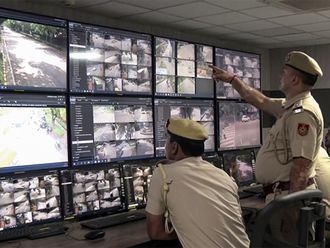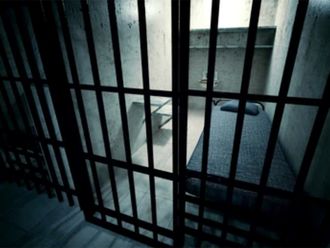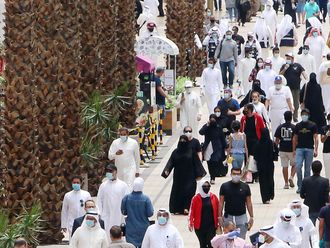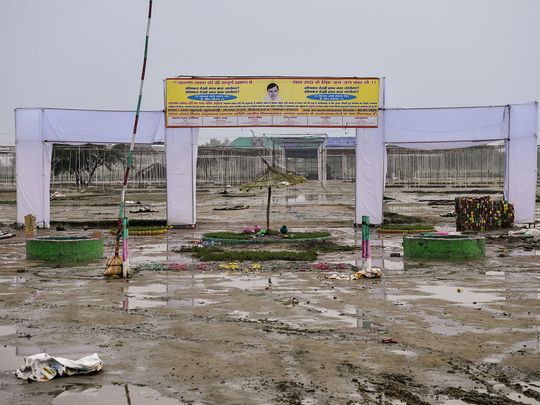
HATHRAS, India: Former police constable-turned-preacher Bhole Baba built an immense following among poor and marginalised Indians before his latest sermon ended in a stampede that killed 121 of his followers.
India is home to innumerable religious gurus or “godmen”, whose devotees beseech them for miracles and donate money and possessions as a token of loyalty.
Baba, whose current whereabouts are unknown, was barely known to the wider Indian public before Tuesday’s disaster.
But in his native state of Uttar Pradesh, he had cultivated a large audience of worshippers and his prayer meetings received thousands of views on social media.
“If you distribute flowers, you will receive a garland in return,” he said during one sermon uploaded to YouTube two years ago, which focused on the virtues of kindness.
Past sermons show Baba dressed entirely in white, sitting on an ornate chair on a dais while addressing huge crowds of devotees, the vast majority of whom were women.
More than 250,000 people attended Tuesday’s prayer meeting he staged near the northern city of Hathras, according to a police report.
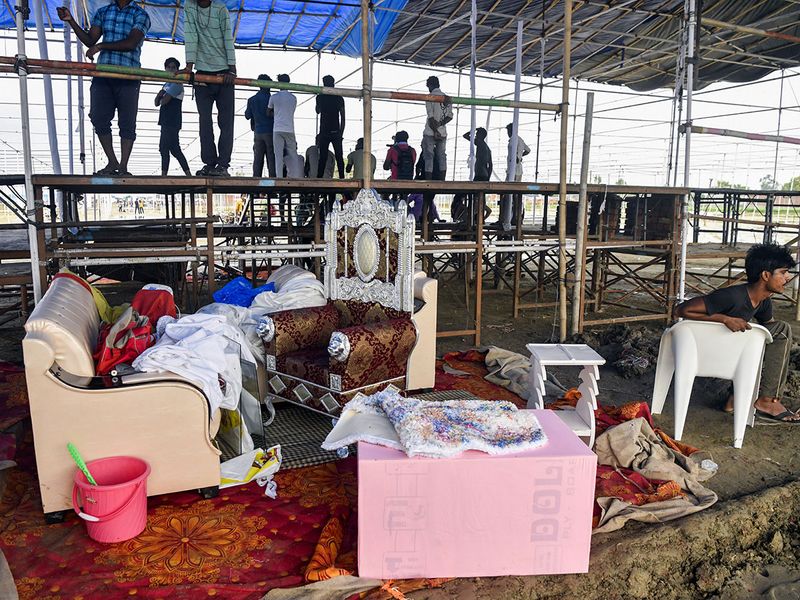
A member of India’s low-caste Dalit community, Bhole Baba’s aim was to create an ideal society, free of superstition and full of compassion, according to a hoarding erected at the site of Tuesday’s incident.
Suraj Pal, alias Bhole Baba, has been known for his controversial ‘satsangs’ and has a history of legal troubles, including allegations of sexual assault.
Despite multiple cases filed against him in various jurisdictions including Agra, Etawah, Kasganj, Farrukhabad, and Rajasthan, he continues to command a considerable following, drawn to his promises of spiritual enlightenment and blessings.
Suraj Pal had a stint in the police department before facing legal troubles in 1997 related to allegations of sexual assault, for which he served time in prison.
Upon his release, he reinvented himself as ‘Saakar Vishwa Hari Baba’, attracting devotees to his ashram in his ancestral village, according to NDTV.
Online persona
Posters and videos posted on Bhole Baba’s YouTube channel, which boasts of millions of views, show him dressed in either traditional Indian kurta tunics or pristine white suits and ties, often sporting sunglasses, a departure from the spartan image of most godmen.
He used to travel across the states of Uttar Pradesh, Rajasthan and Madhya Pradesh, in India’s northern belt, where he has a huge following, and address gatherings, mostly on the first Tuesday of every month, local media said.
Holding a microphone in hand, seated on an ornate throne and with his wife by his side, Bhole Baba is seen addressing huge gatherings of mostly women, almost all of whom are sitting on the ground, hands folded in reverence.

“Humanity was the true religion, is the true religion and will always be the true religion,” he is quoted as saying in a poster.
To protect himself from devotees who would rush to touch his feet and seek his blessings, Bhole Baba had formed a security team known as Narayani Sena, with men and women guards who would escort him to gatherings, an NDTV report, opens new tab said.
‘Don’t do wrong’
Very little is known about the early life of Baba, who was named Suraj Pal at birth but adopted his current moniker after devoting his life to spiritual instruction.
He was born in Uttar Pradesh to a farming family and served as a police constable in Agra, home to the Taj Mahal, before taking early retirement in the 1990s and pursuing his current calling, the Indian Express reported.
Baba’s following was largely drawn from poor and socially disenfranchised caste groups including the Jatavs, who number in the tens of millions in the state.
The Jatavs belong to the bottom rungs of India’s millennia-old caste hierarchy that divides Hindus by function and social standing.
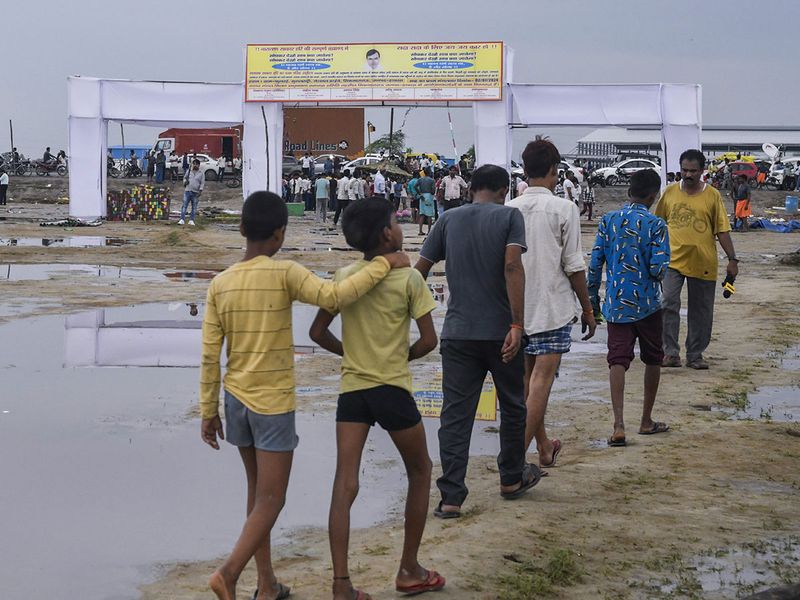
By virtue of their numbers, they are an important political bloc in Uttar Pradesh.
Baba helmed a monastery in the city of Mainpuri, not far from the site of Tuesday’s stampede, where his weekly sermons reportedly drew thousands of people, predominantly women.
Ram Sanai, a 65-year-old devotee present at Tuesday’s sermon, told AFP that part of Baba’s appeal came from his admonitions against excessive alcohol consumption and advice for women facing domestic violence.
“All he says is don’t steal, don’t do wrong and stay honest,” she said.
“Those who attend his events say they have then ended all negativity and problems at home.”
Terror, ‘chaos’
On Wednesday morning, hours after the event, discarded clothing and lost shoes were scattered across the muddy site, an open field alongside a highway.
People fell on top of each other as they tumbled down a slope into a water-logged ditch, witnesses said.
“Everyone - the entire crowd, including women and children - all left from the event site at once,” said police officer Sheela Maurya, 50, who had been on duty Tuesday as a popular Hindu preacher delivered a sermon.
“There wasn’t enough space, and everyone just fell on top of each other.”
Almost all of the dead were women, along with seven children killed and one man.
Officials suggested the stampede was triggered when worshippers tried to gather soil from the footsteps of the preacher, while others blamed a dust storm for sparking panic.
Some fainted from the force of the crowd, before falling and being trampled upon, unable to move.
The Uttar Pradesh’s state disaster management centre, the Office of the Relief Commissioner, released a list of the dead on Wednesday morning.
It said 121 people had been killed.
‘Crushed’
Maurya, who had been on duty since early morning on Tuesday in the sweltering humid heat at the preacher’s ceremony, was among the injured.
“I tried to help some women, but even I fainted and was crushed under the crowd,” she told AFP.
“I don’t know, but someone pulled me out, and I don’t remember much.”
Deadly incidents are common at places of worship during major religious festivals in India, the biggest of which prompt millions of devotees to make pilgrimages to holy sites.
“The main highway next to the field was packed with people and vehicles for kilometres, there were far too many people here,” said Hori Lal, 45, who lives in Phulrai Mughalgadi village, near the site of the stampede.
“Once people started falling to the side and getting crushed, there was just chaos.”




